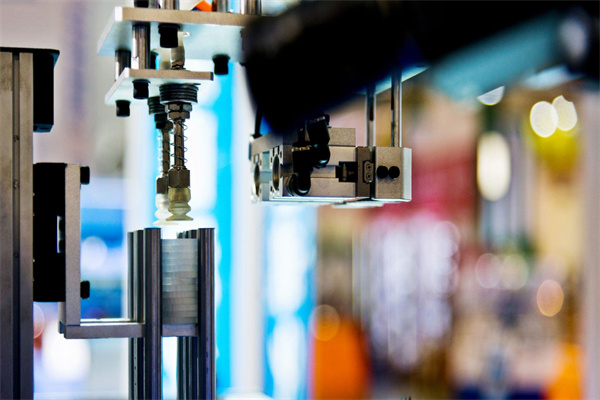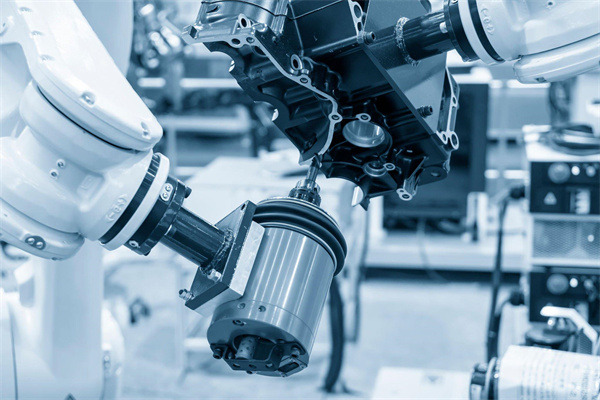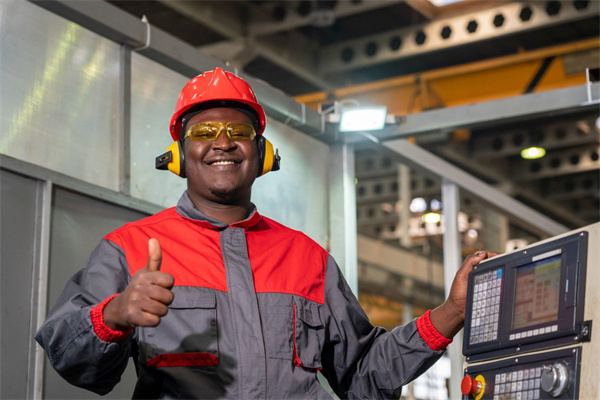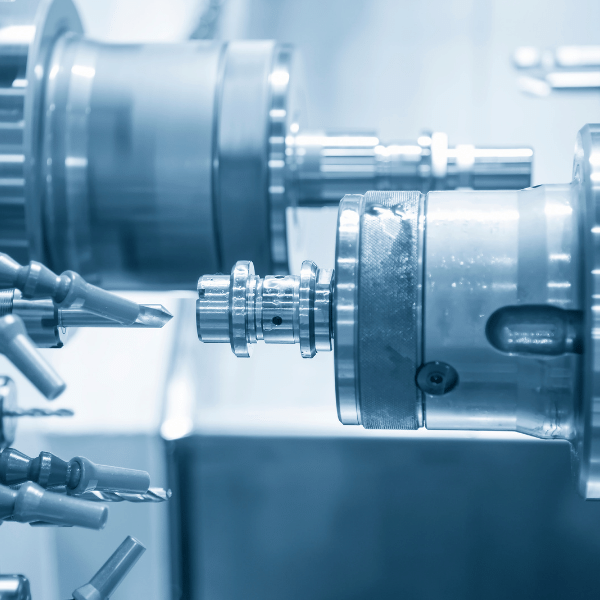What is CNC Machining?
CNC machining is a highly advanced manufacturing process that leverages sophisticated computer software to control complex machinery. This technology has revolutionized the way products are fabricated and enables a level of precision and accuracy that was once thought impossible. With CNC, there’s no need for human intervention beyond programming the software to execute a specific design. The machines can operate around the clock, producing high volumes of precision components. As a result, CNC machining has become an indispensable tool across a wide range of industries, from aerospace and automotive to medical and electronics. For anyone looking to stay competitive in today’s fast-paced marketplace, understanding the capabilities and potential of CNC machining is essential.
History of CNC Machining: From Early Developments to Future Innovations
CNC machining has revolutionized the manufacturing and production industries by introducing accuracy, efficiency, and quality control to the production process. In this article, we will explore the history and evolution of CNC machining, its impact on various industries, and its potential for future advancements.
I. Introduction
CNC machining is a method of automating manufacturing using computer-controlled machines that can precisely execute complex operations. This technology has come a long way since its early beginnings, and today it is a vital aspect of modern manufacturing processes.
II. Early History of CNC Machining
The development of early computer technology in the mid-20th century set the stage for the emergence of numerical control (NC) machines. Introducing these machines, capable of following pre-programmed instructions, made it possible to produce identical parts easily. The birth of CNC machines directly resulted from this development, allowing for even greater precision and control.
III. Advancements in CNC Machining
Advancements in CNC machining have continued to revolutionize the manufacturing process. The introduction of computer-aided manufacturing (CAM) software allowed for even greater control and complexity in the production process. Integration of Computer-Aided Design (CAD) with CAM software streamlined the manufacturing process and made it easier to produce complex parts. Development of multitasking machines and the introduction of 5-axis machines further expanded the possibilities of CNC machining.
IV. Evolution of CNC Machining in Industries
CNC machining has played a critical role in various industries. The aerospace industry has enabled the development of highly advanced aircraft components with the precision required for safety and reliability. In the automotive industry, CNC machining has played a key role in the production of automotive parts, from engine components to car bodies. CNC machining has even found applications in the medical industry, where it is used to produce precise surgical instruments and prosthetics.
V. Pioneers of CNC Machining
The pioneers of CNC machining include John T. Parsons and Frank L. Stulen, who developed the first CNC machine in the late 1940s. Richard Kegg and Douglas T. Ross were also crucial to the development of CNC machining.
VI. Importance of CNC Machining
CNC machining has revolutionized the manufacturing process by increasing accuracy and efficiency while minimizing human error. By reducing production time and cost, CNC machining has made it possible to produce higher quality products at a lower cost.
VII. Future of CNC Machining
The future of CNC machining looks very promising, as advancements in automation and robotics are transforming the manufacturing process. The introduction of artificial intelligence has the potential to automate the production process further, giving manufacturers an even greater degree of control and precision.
VIII. Conclusion
In conclusion, CNC machining has played a critical role in modern manufacturing, and its impact continues to grow. From its beginnings in the mid-20th century to the present day, CNC machining has evolved to become an essential aspect of the manufacturing process. The future of CNC machining looks very promising, with the potential for even greater advancements, automation, and precision. As a buyer of CNC machining services, understanding the history and evolution of this technology can help you make informed decisions about your manufacturing needs.
Overview of CNC Machining Process: A Comprehensive Guide for Buyers
In the increasingly competitive manufacturing world, businesses require technology that provides accuracy, efficiency, and flexibility. Computer Numerical Control (CNC) machining has become crucial to many manufacturing processes. This article will provide a comprehensive guide to CNC machining, including its importance, process, advantages, challenges, and future developments. This article is aimed at buyers who need CNC machining services, to help them make informed decisions when selecting a CNC machining partner.
Importance of CNC Machining in Manufacturing
CNC machining is an advanced manufacturing technology that utilizes computers to control machining tools such as lathes, mills, and routers. The process enables rigorous quality control, superior precision, and greater efficiency in the manufacturing process. The use of CNC machining has revolutionized manufacturing processes, allowing for the production of complex parts with exceptional accuracy.
CNC Machining Process
The CNC machining process involves three critical stages: Computer-Aided Design (CAD), Computer-Aided Manufacturing (CAM), and machine operation with machine setup, and inspection with quality control.
CAD and CAM are computer software programs that help create and convert a design into a machine-readable language called G-code. Once the programing is done, the machine setup stage begins. This involves selecting the right tool, workpiece, and creating the proper clamping and alignment of the workpiece for machining.
The machine operation is then carried out by the CNC machine, which follows the G-code programmed by the operator. After the machining is complete, inspection and quality control are performed to ensure the finished product meets the required accuracy and quality standards.
Advantages of CNC Machining
CNC machining has several advantages, making it an essential technology in manufacturing. These advantages include precision and accuracy, increased efficiency and productivity, flexibility and customization, and cost-effective manufacturing.
Firstly, CNC machining allows for producing high-precision parts with exceptional accuracy, reproducibility, and repeatability. CNC machines can achieve this accuracy in a single setup, reducing production time and eliminating the need for multiple set-ups, and possible errors.
Secondly, CNC machining can significantly increase productivity by reducing lead time, minimizing scrap rates, and allowing for high-speed machining.
Thirdly, CNC machining provides flexibility and customization in the manufacturing process, allowing for the production of complex parts with intricate designs beyond conventional machining methods’ limits.
Finally, CNC machining can be more cost-effective than traditional machining methods, as it reduces waste, reduces labor costs, and eliminates the need for multiple setups.
Challenges in CNC Machining
Despite the many advantages of CNC machining, there are also several challenges to overcome. These include technology obsolescence, high costs of implementation, and lack of skilled operators.
As with any technology, CNC machining can become obsolete quickly. This can lead to the need for costly upgrades or the purchase of new machines to stay competitive in the market.
Additionally, the high cost of implementing CNC machining technology can be a significant barrier to adoption for small and medium-sized businesses. The cost of purchasing machines, training personnel, and software upgrades can be significant.
Finally, the lack of skilled operators can severely limit the effectiveness of CNC machining technology. Skilled professionals are necessary to operate and program CNC machines correctly.
Conclusion
In conclusion, CNC machining has become an essential technology in the manufacturing industry. It enables rigorous quality control, superior precision, and greater efficiency in the manufacturing process. Despite the challenges faced by the technology, CNC machining is continuously evolving, with promising developments in automation, integration with Industry 4.0, and the increasing use of artificial intelligence and machine learning.
As a buyer, it is essential to understand the CNC machining process comprehensively. By understanding the importance, process, advantages, and challenges of CNC machining, you can make informed decisions when selecting a CNC machining partner. We hope this guide has provided valuable insights into CNC machining for your next production project.
CNC Machines vs. Traditional Machines: A Comprehensive Comparison
I. Introduction
As technology advances, the manufacturing industry is constantly evolving. With the rise of CNC (Computer Numerical Control) machines, traditional manufacturing processes such as milling, cutting, and drilling are becoming increasingly automated. This article aims to compare the advantages and disadvantages of CNC machines and traditional machines, helping readers decide which type of machine is best suited for their specific production needs.
II. Advantages of CNC Machines
CNC machines offer numerous advantages over traditional machines. Firstly, they offer increased precision and accuracy, resulting in improved product quality. Secondly, CNC machines can fabricate complex and intricate designs with ease, opening up new design possibilities. Thirdly, CNC machines provide consistency in quality of output, ensuring that every product is produced to the same high standard. Fourthly, using CNC machines can reduce the need for manual labor, resulting in increased efficiency and reduced labor costs. Finally, CNC machines come with improved safety measures, making them a safer option for workers.
III. Advantages of Traditional Machines
While CNC machines offer numerous advantages, traditional machines also possess some unique advantages. Firstly, traditional machines are better suited to handling larger materials, making them a better option for heavy-duty projects. Secondly, traditional machines offer greater customizability and versatility, as each project can be adjusted and controlled manually. Thirdly, traditional machines have lower investment costs compared to CNC machines, making them more accessible to smaller businesses. Fourthly, traditional machines are generally more familiar and easier to use than CNC machines. Finally, traditional machines offer more control over the production process, allowing for greater flexibility and creativity.
IV. Differences in Cost and Maintenance
CNC machines generally require a greater investment to purchase and maintain compared to traditional machines. While traditional machines require occasional maintenance such as oiling and cleaning, CNC machines require more complex maintenance procedures, such as updating software and replacing electronic parts. However, CNC machines typically have longer lifespans, reducing the need for replacement and potentially saving money in the long run.
V. Comparison of Output Quality
CNC machines offer higher precision and accuracy compared to traditional machines, resulting in more consistent product quality. However, traditional machines can handle larger materials and offer greater customizability, making them a better option for certain projects. Additionally, CNC machines can experience difficulties when working with certain materials or shapes, while traditional machines are more adaptable.
VI. Industries that Utilize CNC Machines vs. Traditional Machines
CNC machines are commonly used in aerospace, automotive, and medical equipment manufacturing industries. Traditional machines are still widely used in industries such as construction, metalworking, and woodworking.
VII. Conclusion
In conclusion, both CNC machines and traditional machines offer unique advantages and disadvantages. The decision of which machine to use ultimately depends on each project’s specific goals and requirements. As technology advances, the use of CNC machines is likely to become more widespread, but traditional machines will continue to offer their own advantages. By understanding the differences between CNC machines and traditional machines, manufacturers can make informed decisions about their manufacturing processes and choose the best options for their projects.
Types of CNC Machines: Understanding Their Definitions, Applications, Advantages, and Disadvantages
Computer Numerical Control (CNC) is an automated technology that enables the design and production of accurate and reliable components across a broad range of industries. CNC machines are designed to work with various materials such as metals, plastics, composites, and other materials. In this article, we will explore the different types of CNC machines, their applications, advantages, and disadvantages.
I. Introduction
CNC machines have revolutionized manufacturing processes by increasing production rates, reducing costs, and increasing accuracy. CNC machines come in different types, each suited for specific applications to meet manufacturing requirements.
II. CNC Lathe Machines
CNC lathe machines are used in various industries such as healthcare, aerospace, automotive, and defense, to name a few. A CNC lathe machine is used to shape and create cylindrical parts through the use of precision cutting tools. The lathe machine can work on metals, plastics, and composites.
Advantages of CNC lathe machines include high accuracy, reduced production time, and the ability to produce high-quality products with complex geometries. Disadvantages of CNC lathe machines include high initial cost, large machine footprint, and limited range of material types.
Examples of products manufactured on CNC lathe machines include automotive parts such as transmission valves and engine components, aerospace parts such as engine shafts and turbine blades, and healthcare parts such as surgical instruments and medical implants.
III. CNC Milling Machines
CNC milling machines are used in various industries such as automotive, medical, aerospace, and defense. A CNC milling machine uses a cutting tool that moves in multiple axes to create parts with complex geometries. The machine can work on metals, plastics, and composites.
Advantages of CNC milling machines include high accuracy, high production rates, and flexibility to produce various types of products. Disadvantages of CNC milling machines include high initial cost, complex programming, and the need for skilled operators.
Examples of products manufactured on CNC milling machines include automotive parts such as engine blocks and transmission cases, medical implants such as joint replacements, and aerospace parts such as airframe components.
IV. CNC Laser Machines
CNC laser machines are used in various industries such as aerospace, automotive, and medical. A CNC laser machine uses a focused beam of light to cut or engrave materials such as metals, plastics, and composites.
Advantages of CNC laser machines include high accuracy, high production rates, and flexibility to work with various materials. Disadvantages of CNC laser machines include limited material thicknesses, high maintenance costs, and potential safety hazards.
Examples of products manufactured on CNC laser machines include aerospace parts such as wing skins and fuselage panels, automotive parts such as dashboard components, and medical instruments such as surgical tools and implants.
V. CNC Plasma Cutting Machines
CNC plasma cutting machines are used in various industries such as metal fabrication, automotive, and construction. A CNC plasma cutting machine uses a high-temperature plasma arc to cut metals.
Advantages of CNC Plasma cutting machines include high speed, ability to cut thick materials, and a relatively low initial cost. Disadvantages of CNC plasma cutting machines include limited accuracy, rough edges, and the generation of fumes and noise.
Examples of products manufactured on CNC plasma cutting machines include metal components for bridges, heavy machinery components, and automotive parts such as chassis and frames.
VI. CNC Waterjet Machines
CNC waterjet machines are used in various industries such as aerospace, automotive, and medical. A CNC waterjet machine uses a high-pressure stream of water mixed with abrasive material such as garnet to cut materials such as metals, plastics, and composites.
Advantages of CNC waterjet machines include high accuracy, high flexibility, and the ability to cut various materials without generating heat. Disadvantages of CNC waterjet machines include high operating costs, relatively slow production rates, and high maintenance costs.
Examples of products manufactured on CNC waterjet machines include aerospace parts such as airframe components and engine parts, automotive components such as body panels, and medical components such as surgical instruments.
VII. CNC Wire EDM Machines
CNC wire EDM machines are used in various medical, aerospace, and automotive industries. A CNC wire EDM machine uses an electrically charged wire to cut materials such as metals.
The advantages of CNC wire EDM machines include high accuracy, the ability to cut complex geometries, and reduced tool wear. Disadvantages of CNC wire EDM machines include limited material thicknesses, relatively slow production rates, and high operating costs.
Examples of products manufactured on CNC wire EDM machines include medical implants such as pacemakers, aerospace components such as jet engine blades, and automotive components such as gears and shafts.
VIII. Conclusion
CNC machines are designed to increase production rates, reduce costs, and improve component accuracy in various industries. Understanding the different types of CNC machines and their applications, advantages, and











